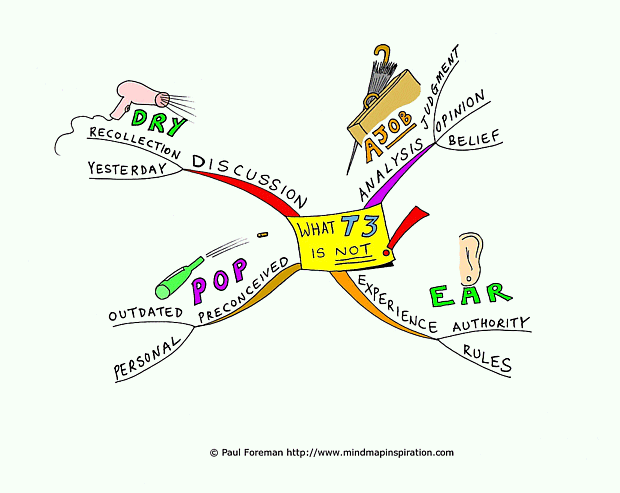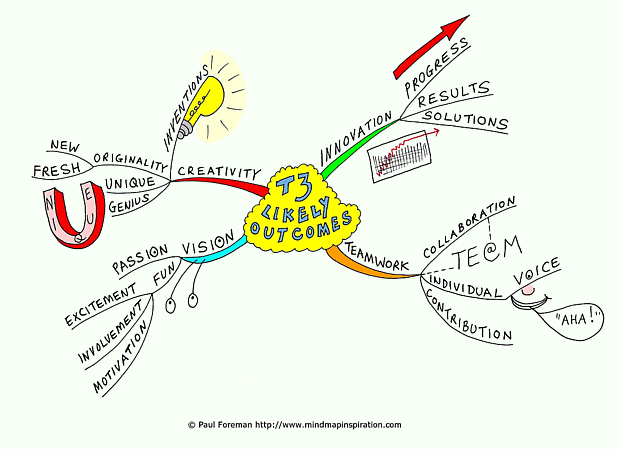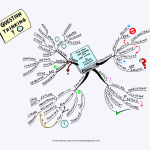Here is an idea for individual and group schedules simple T3 breaks (T3 = Time to Think)
T3 doesnt mean tea-free by the way drinking tea or water would be a good idea, as hydration is of course beneficial and a basic functioning requirement.
I have experimented extensively with this suggestion, learnt from personal experience and have found it to be a brilliant system for creativity, idea generation, planning, prioritising, time management and organisation. After reading this Blog post perhaps you may give it a try too, either personally or in a business environment or both.
If you wish to give feedback on T3 please do you can leave comments at the end of this post or email me directly; Paul at [email protected]
What is T3? It is simply setting aside a time each day for silent contemplation. In short Time to Think; shorter still T3
Before you discount T3 or think it is nothing new, or unlikely to work, consider what it is going to cost you to try it. Nothing.
The key to T3 is that it centres on quiet contemplation allowing silence to be the medium for answers and ideas to arrive. The quieter you become the more creative and productive you will be and the key is a pressure-free environment if ideas dont come instantly that is ok too.
T3 isnt your normal meeting or brainstorming session and it isnt an excuse to go off and slack somewhere. If done correctly, T3 will be innovative, inventive and creative. Time spent in T3 can be anything from 5 minutes upwards. A short T3 break in a quiet room or even outside among nature would be far more beneficial than any stuffy pressurised meeting sat around a table or putting yourself under pressure to finish an assignment.
Meetings of course have their place, yet unless you have an open, relaxed and honest arena, so very often everyone is so preoccupied with not looking stupid by saying the wrong thing that they end up saying nothing; result very few ideas arise. Another drawback of meetings is they are often time scaled T3 is timeless; open-ended and with no limitations. Ideas come when they are ready and T3 is simply a portal for allowing ideas in. It can be used in groups or individually. Sometimes answers will come and sometimes they wont and that is good too. The reason it is good is because you are waiting for quality ideas and quality ideas sometimes come instantly and sometimes they take time. T3 is about nurturing the right medium for potential and allowing that potential to come when ready.
There is nothing wrong with saying Ill come back to you on it, be it a phone call, email, face-to-face, whatever. Sometimes pushing for an instant answer gets an instant thought or reaction and probably a wrong one unless you are fortunate enough to be right on a regular basis or have the gift of saying the right thing at the right time. Personally, I dont I need to think things through and sometimes for a long time before creating anything I consider productive. If you rush me into an idea I will probably not deliver a quality idea, yet if you give me time to consider things through I might just come up with a gem.
Time isnt an element in T3 in fact, just the opposite time is irrelevant. Hence Time to Think it means take as long as you like rather than Right, now it is time to think come on think!
Naturally, there are occasions when an instant decision needs to be made; this isnt what T3 is about T3 is about ideas, progress, suggestions and possibilities, finding alternative ways without necessarily reinventing the wheel.
T3 may not work for or be appropriate to everyone.
T3 is pretty much a meditation, and so not only will more ideas come, you will feel more relaxed too. Inventors and scientists use this technique whether on purpose or not in fact, we all use it to a certain degree when we say Ill sleep on it
Pressure isnt necessarily put on scientists to come up with instant answers or overnight solutions to problems; sometimes processes take time and sometimes the aha moment comes in a flash as if by magic. If you cast your mind back to school, the teacher asks the class a question and the quickest hand in the air gets to speak there could be dozens more sitting there with the answer, possibly even a better one and suddenly speed can be seen as a measure of intelligence.
T3 is the opposite –
T3 says come with answers when the answers come.
What T3 is not; here are some suggestions:
T3 could be taken and developed further or used in combination with other systems:
In organisations from the ground to board level, what if everyone got to contribute?
Truly contribute, two-way communication, sharing ideas, contemplation, discussion and feedback and what if it was recorded using Mind Maps; time, date, contribution, contributor.
Gone would be the days of mentioning an idea only to have it introduced by someone else as their idea.
Scary? Only to those not creating or contributing.
Yet, rather than using fear be it fear to perform or fear to suggest and fail T3 would encourage everyone to participate. Part of using T3 would be to eliminate fear, invite teamwork and very importantly not use it as a measure of ability, because that would dump you back at square one at fear.
Failure should be encouraged; it is what gets results.
If T3 uncovers raw talent great; if that talent then gets rewarded with a well-earned bonus or even a thank you simple recognition for a job well done, there is a motivational incentive to contribute. Rewards dont necessarily mean those that havent contributed are lacking because they too could be future producers if encouraged.
What would happen if a dozen plus people sat in total silence, jotting down thoughts or Mind Mapping ideas on a given subject without a fixed agenda or timescale?
Simply adding ideas on a regular basis to a central pot for consideration.
Here are some likely outcomes:
On an individual level, T3 allows for greater creativity art has long been used as a therapy and what better medium than Mind Maps to combine radial thinking and creative art to foster new thinking. Taking it a stage further, combining Mind Maps and T3, suddenly there are hundreds of possibilities opening up before you in a relaxed environment. (Because of the nature of Mind Mapping there is already a built-in element of T3 in action.) Mind Maps do not suit everyone so it depends on the individual how they would participate in T3.
Unhurried contemplation brings to light possibilities that are otherwise inaccessible when struggling or churning your mind. You can rack your brains for days and then during a daydreaming session or moment of relaxation because your mind is off the search for a solution suddenly eureka. One quality thought is better than thousands without meaning.
You could try T3 on a personal level; perhaps work it in to your schedule for a month, setting aside a time each day for silent contemplation. Making this a regular part of your routine is better than seeking a miracle through desperation and turning to T3 with too higher expectations because something has suddenly gone wrong. (The chances are that in that frame of mind T3 will not work either!)
You could use T3 for a specific topic or a number of subjects and the times could be anything you decide to allocate from five minutes up to an hour or more, although small regular chunks will probably be more productive.
I hope you will try T3 and I hope it works for you as an additional tool to creativity and thinking.
Here are a few questions to get you considering T3 if you have any others, you can use the comments form below or email me if you wish.
Do you like the idea of T3?
Is it something you would try personally?
Would you suggest it to your company?
Are you able to introduce it into your company?
Do you personally use a similar idea?
Is your company already using something like T3?
Has it worked? If so why? If not why?
If you were to try T3 do you think it would work?
What else do you think about T3?
Are you willing to try T3?
More from Mind Map Inspiration:
Submit your review | |










